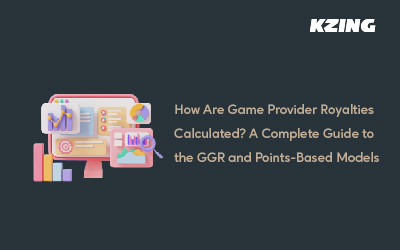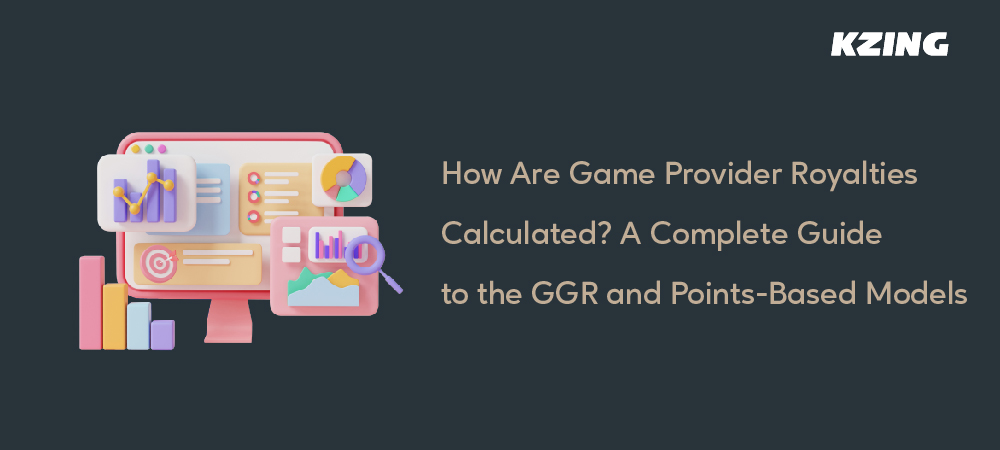

During our conversations with clients, we’ve discovered that many platform operators have only a very basic understanding of how “game point revenue share” works.
Some say: “Whatever the platform gives me, that’s my cut.”
Others say: “I saw money deducted from the wallet — that must be the revenue share.”
But in reality, Revenue Share is a well-structured, data-driven profit distribution mechanism. If you don’t understand how it works, it’s easy to lose out during negotiations or misinterpret your finances.
So today, let’s break it down once and for all—
Table of Contents
- 🔍 What Is Game Point Revenue Share?
- 📊 How Is Revenue Share Calculated? A Look at the Mainstream GGR Model
- ❗Common Misunderstanding: When You Think the “Platform Wins”, It Might Not
- ✅ Kzing’s Revenue Share Logic: Transparent, Trackable, and Trustworthy
Game point revenue share refers to how player betting outcomes (wins and losses) are distributed between the game platform and the game provider/system provider based on a set percentage.
There are three key roles involved:
- Players: Top up and place bets on the games
- Operators (You): The owner/manager of the front-end gaming platform
- Game Providers: Companies that offer the game content and processing systems
Put simply, it’s about how the money players lose is split among the three parties.
Most platforms calculate revenue share using the GGR (Gross Gaming Revenue) model — i.e., the player’s actual win/loss. But do you know how the revenue share percentage is formed and who gets what?
✅ GGR model ≠ You keep the full percentage
GGR = Total Player Bets – Total Player Winnings
For example, if a player loses 10,000 points, the 5% revenue share you see is actually your platform cost — but in reality, it’s the result of layered markups from API cost → white label system → operator.
When the game provider offers the API, it sells it to the white label provider at a cost of 4%.
The white label provider then integrates all games and builds the platform system, reselling it to the operator at a 5% revenue share.
📌 When a player loses 10,000 points, the actual revenue distribution is as follows:
| Role | Revenue Share | Actual Earnings |
| Operator | 95% | 9,500 points |
| Game Provider | 4% | 480 points |
| Platform Provider | 1% | 20 points |
This structure may seem simple, but it reveals two key insights:
✅ The “revenue share percentage” you see represents the operator’s cost, not the game provider’s final earnings.
✅ The white label provider earns their 1% by offering integration, system, and maintenance services — not by undercutting prices.
So don’t just look at the percentage — look at who provides the content, who builds the platform, and who handles operations. That’s how revenue sharing makes sense.
❗Common Misunderstanding: When You Think the “Platform Wins”, It Might Not
Many beginner operators see their account balance grow and think they’re making a profit. But don’t forget:
- If players win, the platform may need to cover payouts (negative revenue)
- If players lose, the provider takes their cut first, then you get your share
- Bonuses / Rebates = actual costs that also affect GGR
📌 Without daily reconciliation or understanding revenue source breakdowns, you might be misled into thinking “the numbers look great, but profits are thin.”
As a one-stop white label solution provider, Kzing ensures that game integration and reporting are backed by three levels of transparency:
1️⃣ Real-time Multi-Currency Conversion
Clearly see the actual value of every point in currencies like CNY, VND, USDT, THB, etc.
2️⃣ Daily Settlement Reports
Auto-generated reports show revenue share breakdowns by game type — no manual calculations needed.
No manual calculations needed — you can instantly view the platform’s net revenue, win/loss for each game, and system commission costs.
No fear of comparison — all data is presented upfront, giving you the confidence to plan for long-term success.
As a platform operator, understanding how game point revenue share works helps you:
✅ Evaluate your platform’s true profitability
✅ Strategically allocate traffic to high- vs low-margin games
✅ Negotiate confidently and manage costs effectively
So the next time you ask a provider, “How is revenue calculated?”, don’t just listen to the percentage. Look at the logic, the formula, and the profit model behind it.
📞 Reach out to our sales team for the best revenue share terms and maximize your profit:
Derek (小波) derek.cheong@kzing.com +63 928 699 8616 TG: @KzingSales03
And don’t forget to follow Kzing White Label on all official channels:
Website: https://kzing.co/
Demo Site: https://kzkzb.com/
Telegram: https://t.me/kzingofficial
Facebook: https://www.facebook.com/kzingofficial
Instagram: https://www.instagram.com/kzingwhitelabel/
YouTube: https://www.youtube.com/channel/UCQso0Xct-YIsBFIxFAyzWiA
LinkedIn: https://www.linkedin.com/company/kzing-white-label-奇迹娱乐包网/
#WhiteLabelGaming #KzingEntertainment #PhilippinesWhiteLabel #iGamingSolutions #GameIntegration #APIProvider #CasinoPlatform #SEAWhiteLabel #IndiaGaming #Sportsbook #Slots #LiveCasino #CryptoGaming










